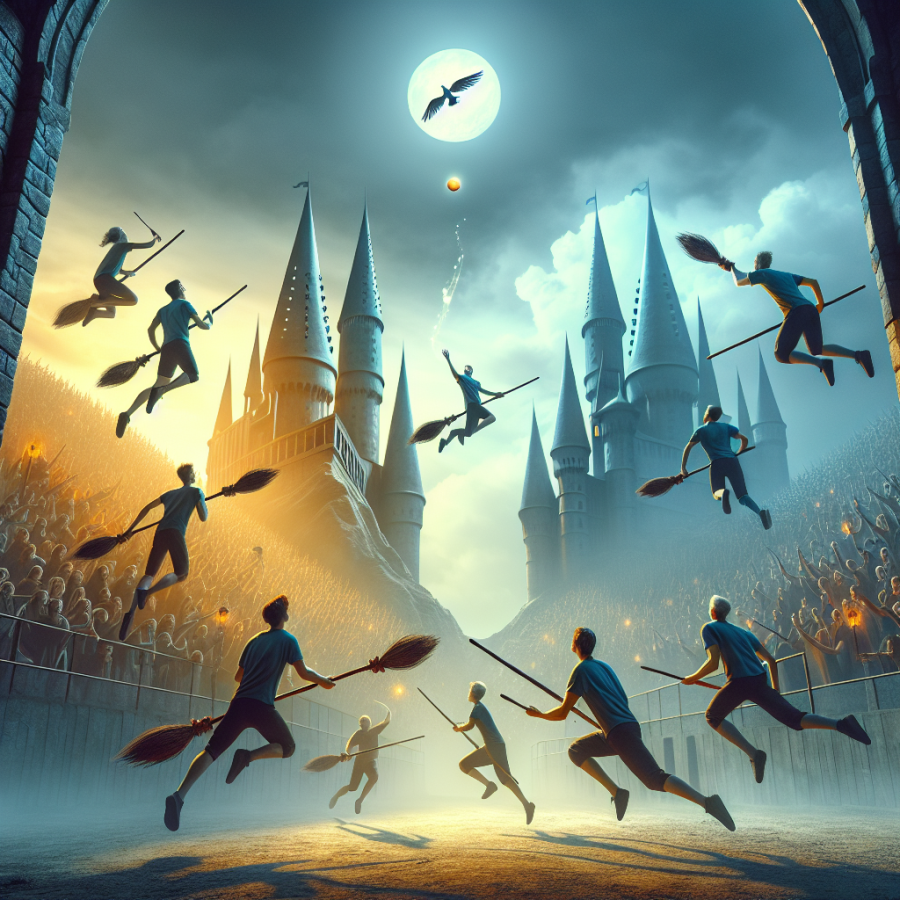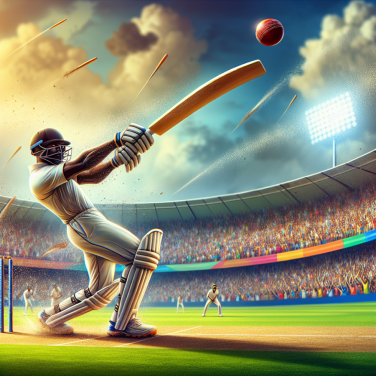From Fantasy to Playing Fields: Quidditch Takes Flight in the Muggle World
Quidditch, the fantastic sport made famous by the "Harry Potter" series, has captured the imaginations of fans for decades. But what once was confined to the realm of fantasy has now been adapted into a thrilling physical sport played by Muggles—non-magical folk—around the globe.
The journey from the pages of J.K. Rowling’s beloved books to the real-world playing fields was an unexpected evolution. It all began in 2005 at Middlebury College in Vermont when Xander Manshel and Alex Benepe, two college students and Potter enthusiasts, turned the fiction-based game into a reality for a Sunday fun activity. Little did they know that it would rapidly grow into a full-fledged sport with international rules and competitive leagues.
Without the capability for flight or magical balls, adaptations were necessary. The sport combines elements of rugby, dodgeball, and tag, with participants required to keep a broomstick between their legs at all times, maintaining the fantastical essence of the game. Each team has seven players: three chasers who score with the quaffle (a volleyball), two beaters who disrupt play with bludgers (dodgeballs), a keeper who defends the hoops, and a seeker who chases the snitch—a neutral player with a ball in a sock attached to their waistband, replacing the flying golden ball.
On the international scene, Quidditch is governed by the International Quidditch Association (IQA), which oversees the sport's official rules and organizational aspects. National governing bodies, such as US Quidditch (USQ) and QuidditchUK, facilitate regional leagues, tournaments, and the development of the sport within their respective communities.
Collegiate and community teams have planted roots in countries far and wide, with players donning team colors, refining strategies, and competing in tournaments—a testament to the game’s growing legitimacy and appeal. The Quidditch World Cup, once a whimsical idea, is now a serious competition attracting teams from across the globe, showcasing the sport's international appeal and the fervent passion of its participants.
The sport isn’t just a physical endeavor; it also carries the values embedded within the Harry Potter series: inclusivity, gender equality, and community building. Quidditch has been at the forefront of progressive policies in sports, with gender maximum rules in place to ensure a co-ed environment and an acceptance of all gender identities.
Blurring the Lines Between Worlds: How Quidditch Became a Competitive Earthly Sport
Since its first mention in J.K. Rowling's Harry Potter series, Quidditch captured the imaginations of readers, creating a fervor that leaped off the pages and into reality. This once fictional sport is now played by Muggles — or non-magical folks — worldwide, evolving into a competitive and athletic pursuit that blurs the lines between the magical and earthly realms.
Quidditch has made a fascinating transition from fantasy to tangible sport. The key to its adaptation was the innovative ways enthusiasts have mimicked the magical elements. Brooms still play a central role; though they do not fly, players must keep them between their legs at all times, preserving the iconic imagery and adding an element of challenge. The role of the Golden Snitch, a winged ball in the novels, is played by a neutral athlete dressed in yellow, making the Seeker's job as dynamic and demanding as in the wizarding world.
The sport's structure is quite complex, including multiple positions such as Chasers, Beaters, Keepers, and Seekers, each with distinct responsibilities. Chasers pass a volleyball, referred to as the Quaffle, and score through hoops fixed at varying heights. Beaters throw dodgeballs, called Bludgers, to disrupt the game and protect their team. The Keeper guards the hoops, while the Seeker chases the human Snitch. Once caught, the Snitch ends the game, but in this earthly version, it awards additional points rather than determining the game's outcome, maintaining competitiveness until the end.
Quidditch leagues and organizations, complete with official rulebooks, have emerged. The International Quidditch Association and US Quidditch are among the bodies governing the sport, organizing tournaments like the Quidditch World Cup, which parallels the one in Rowling's universe. Collegiate and community teams train rigorously, vying for a chance to prove their skills on this global stage.
One of the sport's most appealing aspects has been its inclusivity. Quidditch utilizes a gender-inclusive policy, creating a space where athletes of all genders compete together. This practice, known as "Title 9 ¾," refers wittily to both Title IX, U.S. legislation ensuring gender equality in education and sports, and to the magical platform from which Hogwarts students depart for school. It's this cultural awareness and engagement that have helped propel the sport from campuses into a broader public consciousness.




